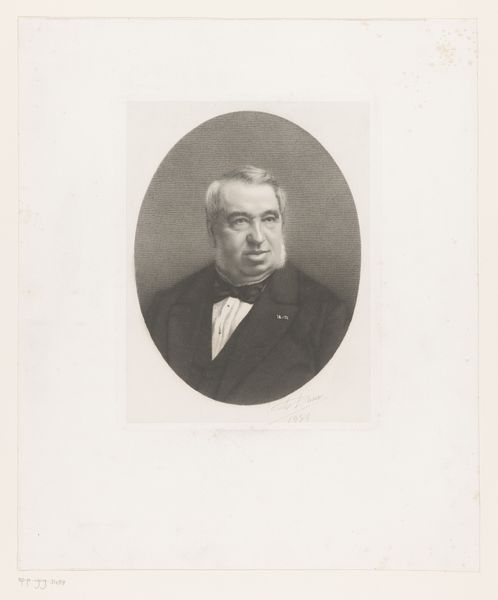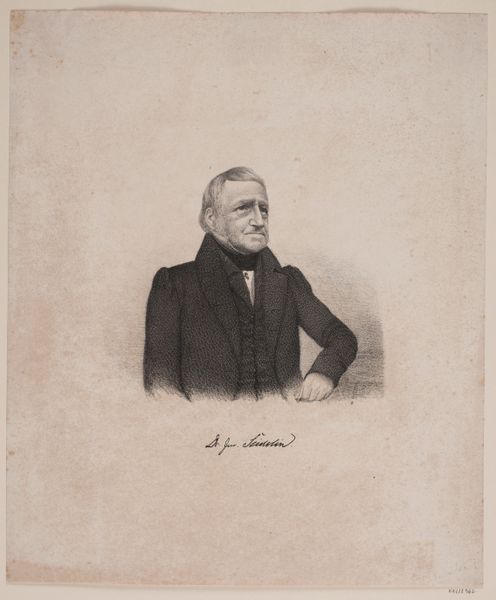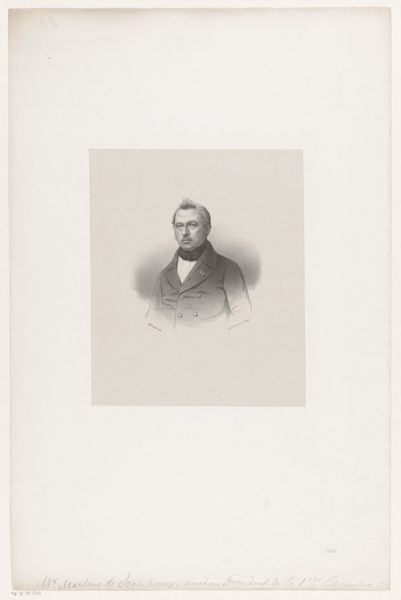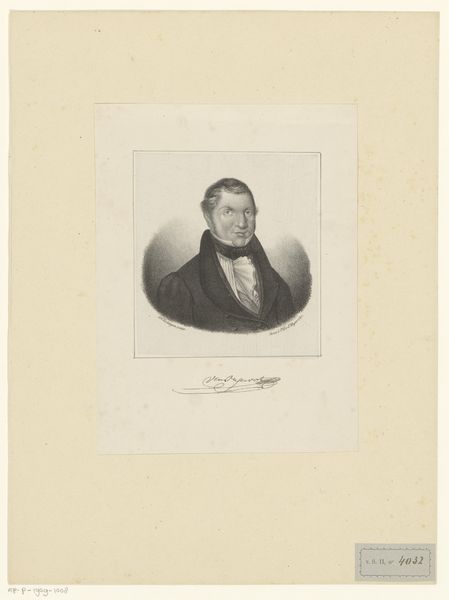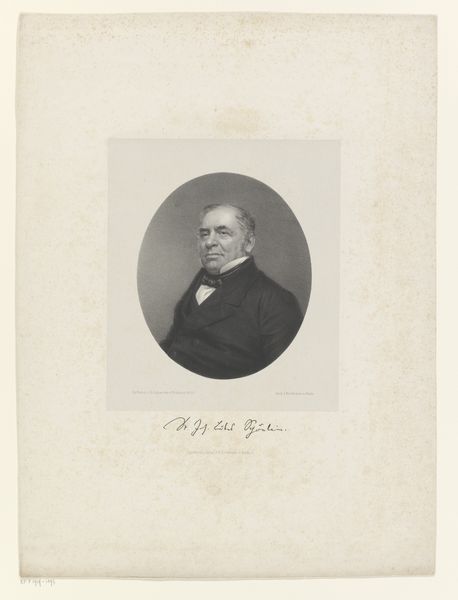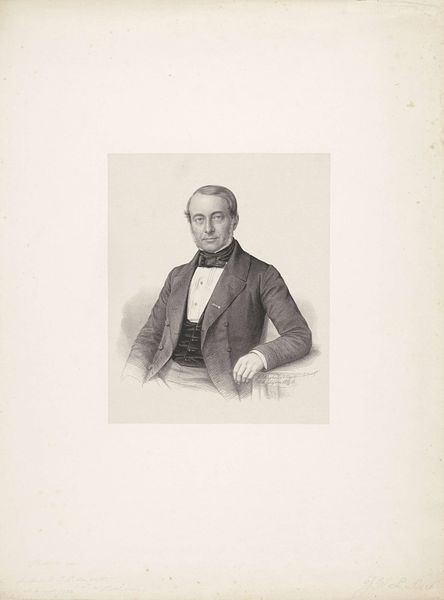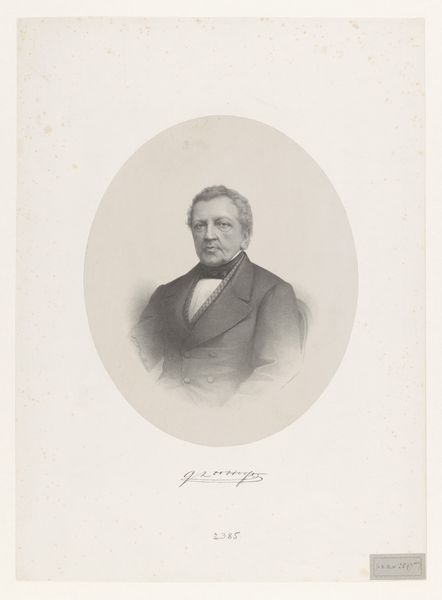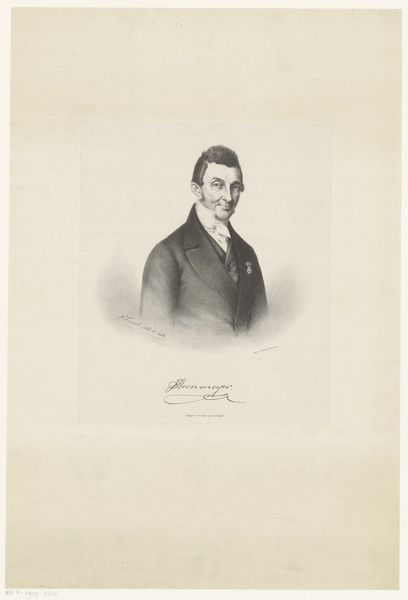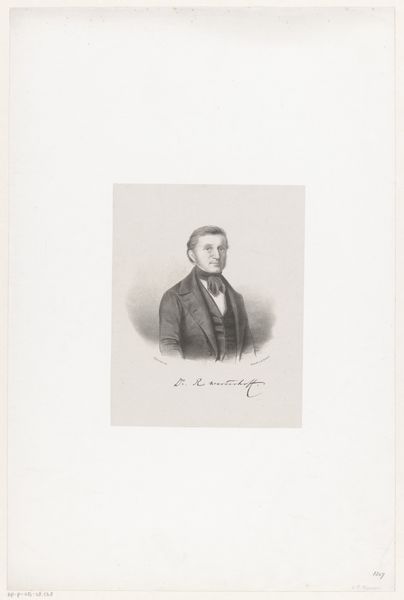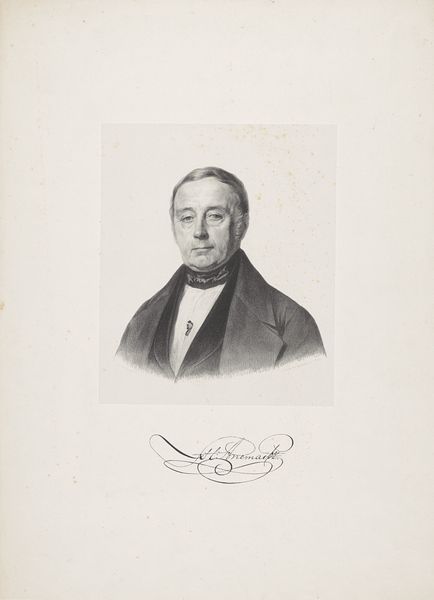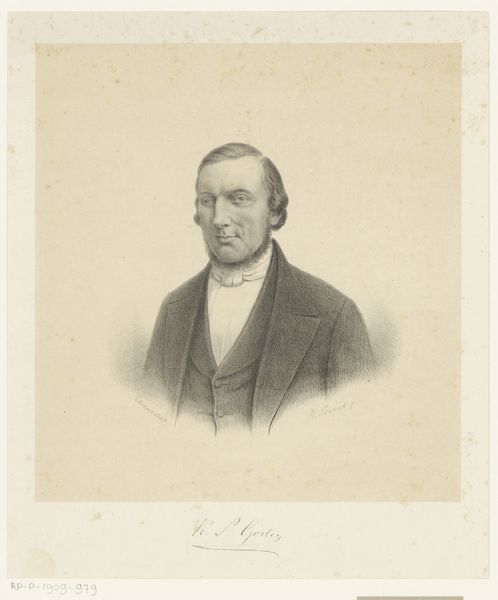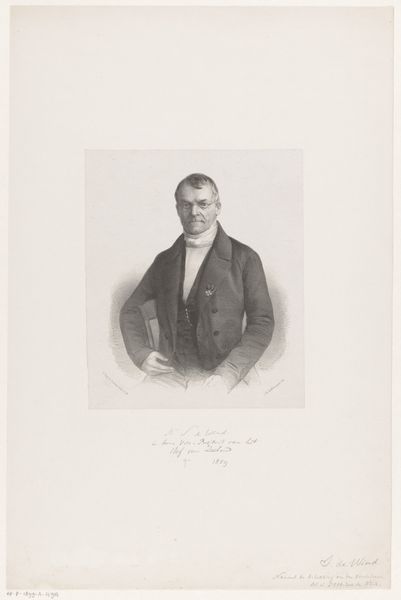
lithograph, print, paper
#
portrait
#
toned paper
#
lithograph
# print
#
paper
#
19th century
#
realism
Dimensions: 334 mm (height) x 257 mm (width) (bladmaal)
Editor: So this is Søren Johan Heiberg, a lithograph from 1862. It’s just a head and shoulders portrait, very traditional, but something about the tight rendering feels really modern to me. What jumps out at you about this print? Curator: It's interesting you say modern. For me, lithography in the mid-19th century signifies the democratization of portraiture. Consider the social implications – who had access to painted portraits? The wealthy, of course. But lithography offered a cheaper, mass-produced alternative. Does the process, the industrialization of image-making, alter our understanding of what a portrait *is*? Editor: Absolutely! Thinking about the lithographic process, the way the image is built up through layers on the stone, it's like a proto-photographic reproduction. So, is Heiberg’s status lowered or elevated because of it? Curator: Precisely! The value isn't inherent but negotiated through materials and labor. Consider the paper itself – its quality, the evidence of aging, the marks of production. What does that tell us about the intended audience and the economic context of its creation and circulation? The toned paper and the marbling too – were they shortcuts, or value added? Editor: It's amazing how much the *how* of it impacts the *what* of it. I wouldn't have considered that as much looking at other art. Thanks for shifting my perspective on it. Curator: Indeed, recognizing the means of production, its tangible reality, invites a deeper understanding of art's place within the wider world. It enriches our view of art’s contribution to, and impact from the world of commerce, craft, and labor.
Comments
No comments
Be the first to comment and join the conversation on the ultimate creative platform.
